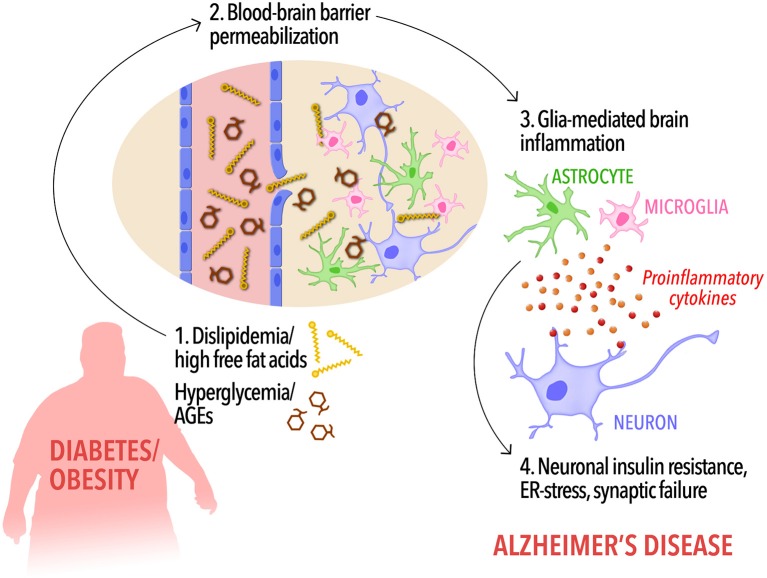Figure 1.
A possible cascade of events connecting peripheral metabolic dysregulation to dementia. In diabetic and/or obese subjects, dyslipidemia, and increased circulating free fat acids as well as hyperglycemia and elevated peripheral AGEs levels (1) may increase blood-brain barrier permeability, allowing the influx of FFAs into the brain (2). Disrupted BBB along with high levels of brain FFAs and AGEs, in turn, would cause activation of microglia and astrocytes and the release of proinflammatory cytokines (3). Low-grade, chronic brain inflammation leads to detrimental events in neurons, including insulin resistance (4), priming the brain to cognitive impairment and Alzheimer's disease.

